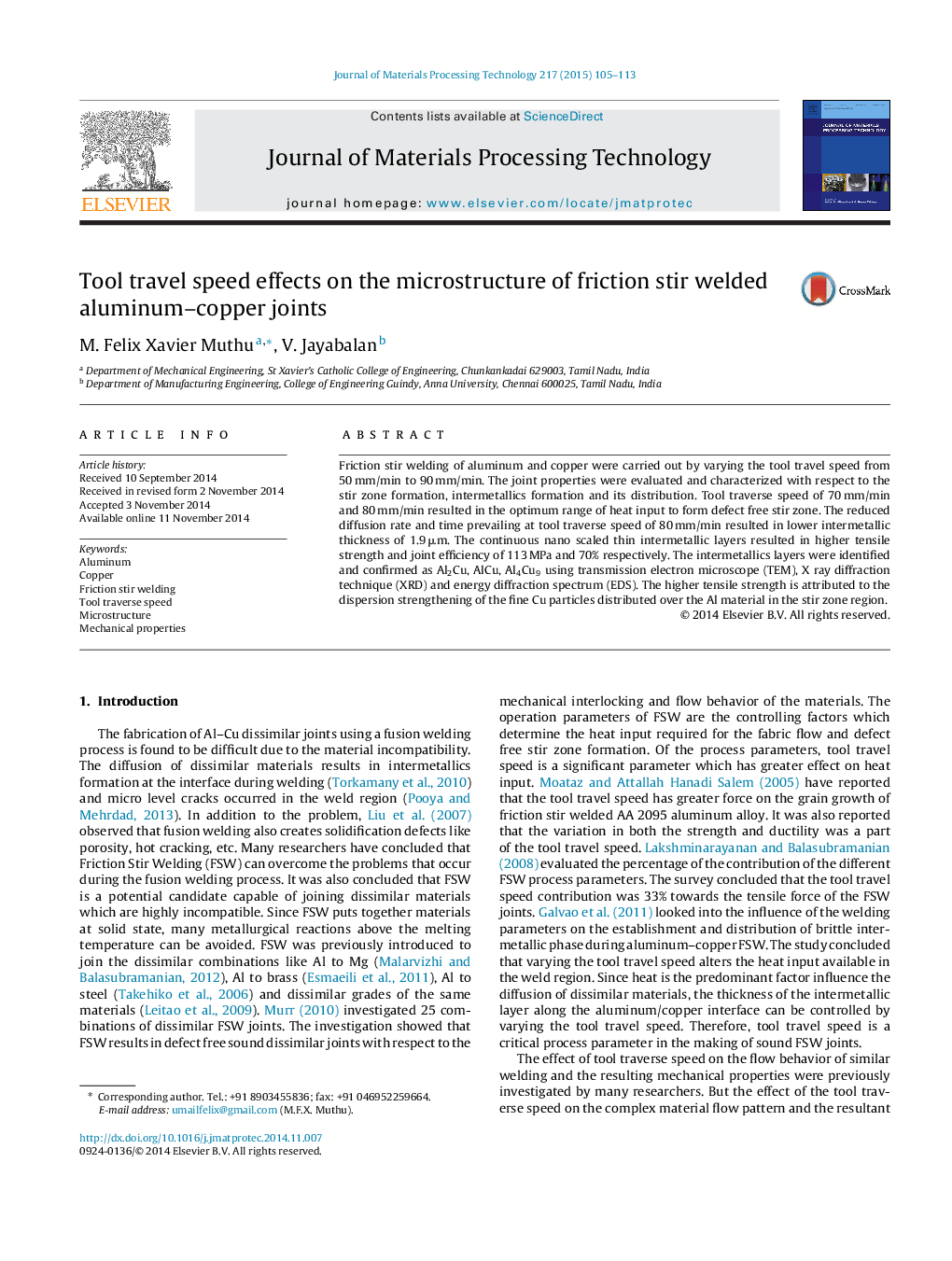| Article ID | Journal | Published Year | Pages | File Type |
|---|---|---|---|---|
| 7177227 | Journal of Materials Processing Technology | 2015 | 9 Pages |
Abstract
Friction stir welding of aluminum and copper were carried out by varying the tool travel speed from 50 mm/min to 90 mm/min. The joint properties were evaluated and characterized with respect to the stir zone formation, intermetallics formation and its distribution. Tool traverse speed of 70 mm/min and 80 mm/min resulted in the optimum range of heat input to form defect free stir zone. The reduced diffusion rate and time prevailing at tool traverse speed of 80 mm/min resulted in lower intermetallic thickness of 1.9 μm. The continuous nano scaled thin intermetallic layers resulted in higher tensile strength and joint efficiency of 113 MPa and 70% respectively. The intermetallics layers were identified and confirmed as Al2Cu, AlCu, Al4Cu9 using transmission electron microscope (TEM), X ray diffraction technique (XRD) and energy diffraction spectrum (EDS). The higher tensile strength is attributed to the dispersion strengthening of the fine Cu particles distributed over the Al material in the stir zone region.
Related Topics
Physical Sciences and Engineering
Engineering
Industrial and Manufacturing Engineering
Authors
M. Felix Xavier Muthu, V. Jayabalan,
